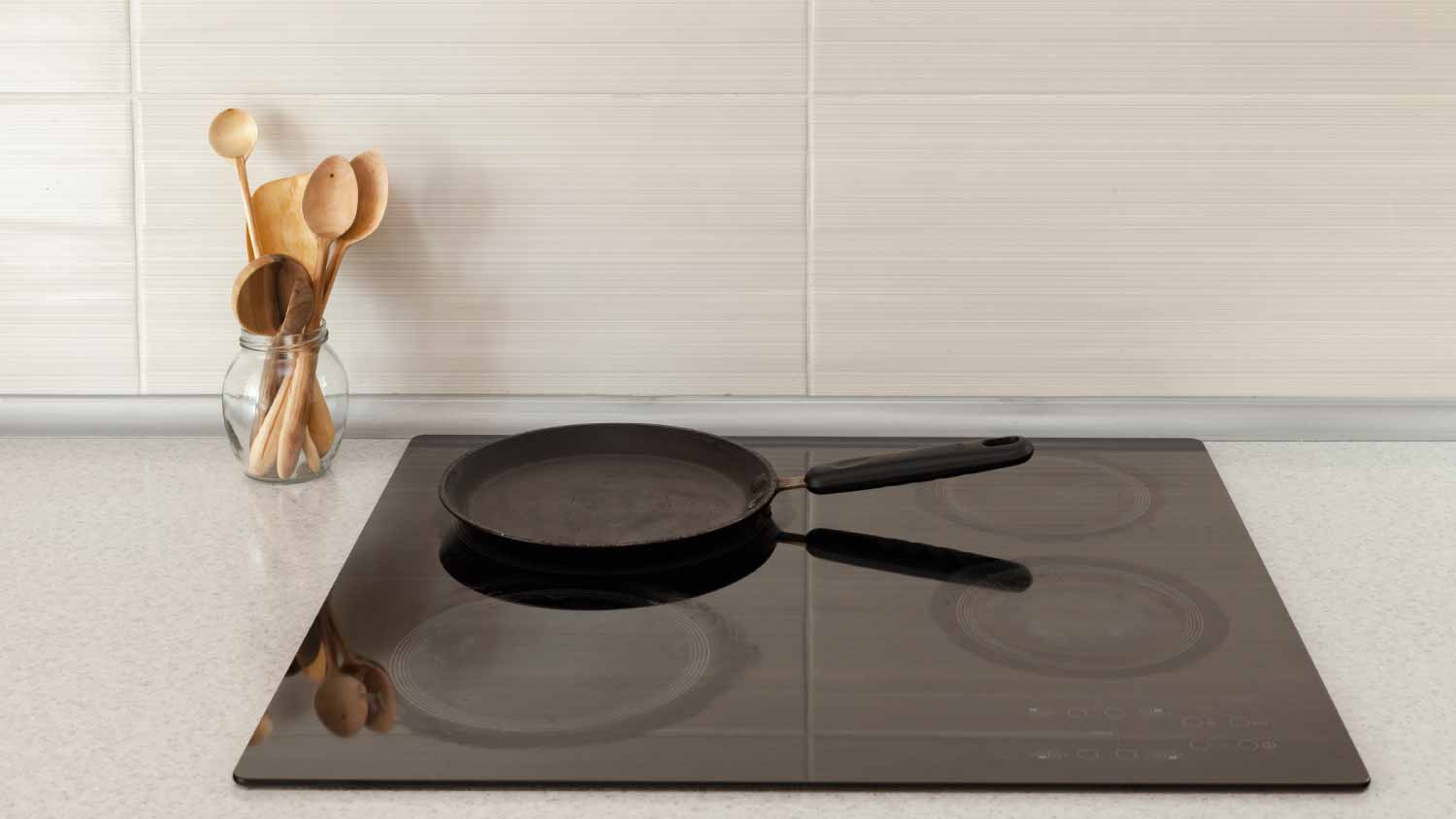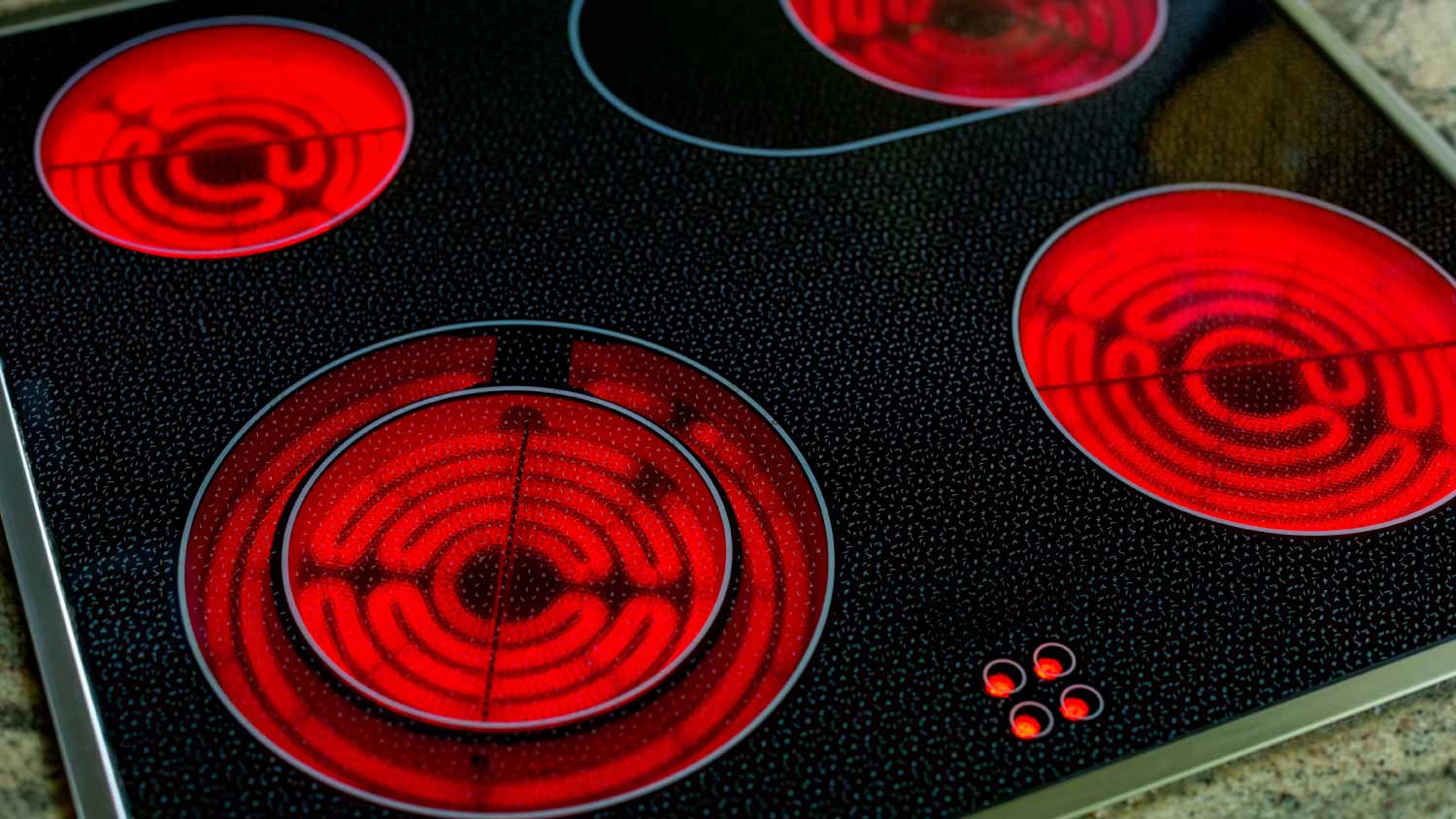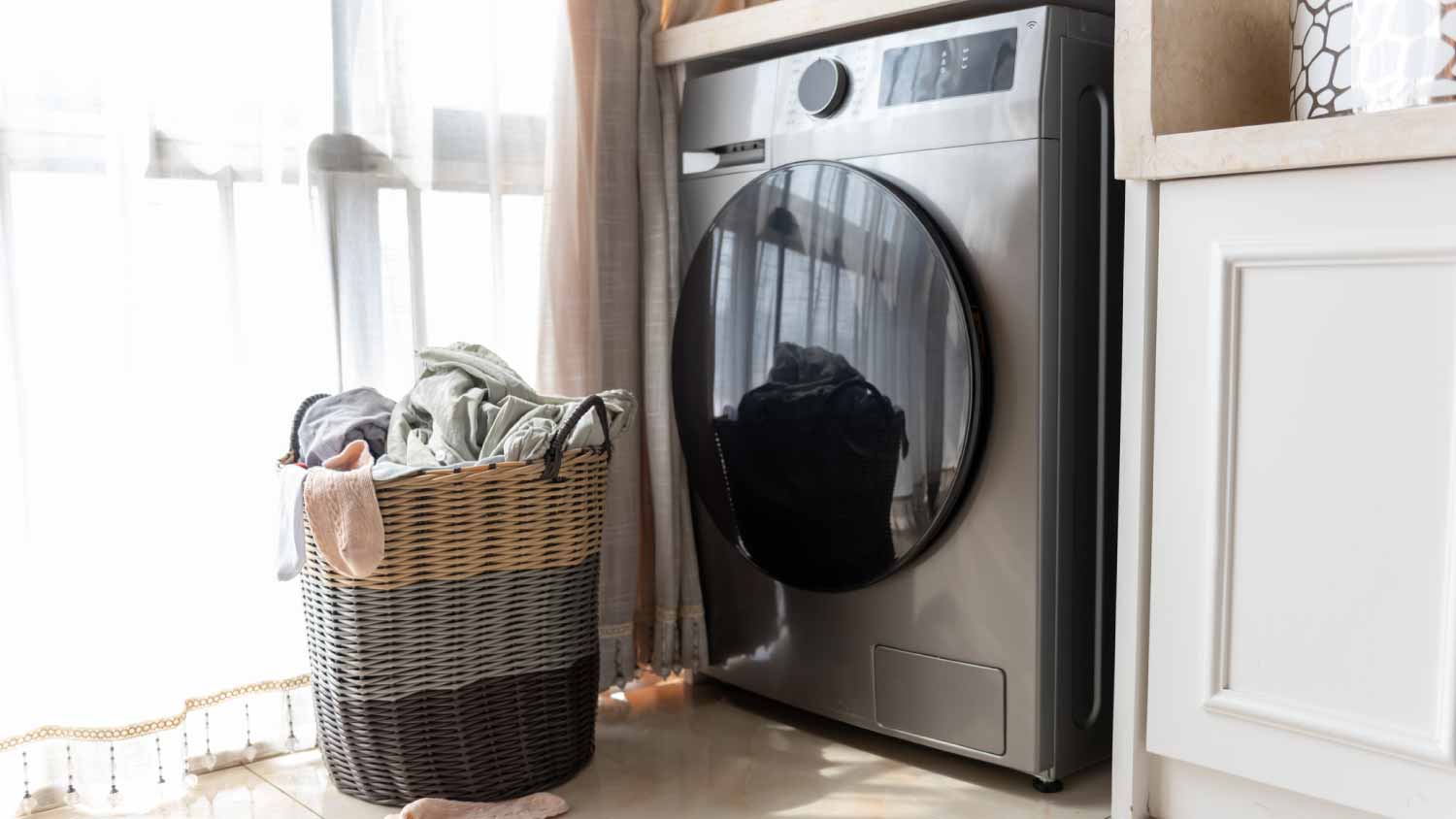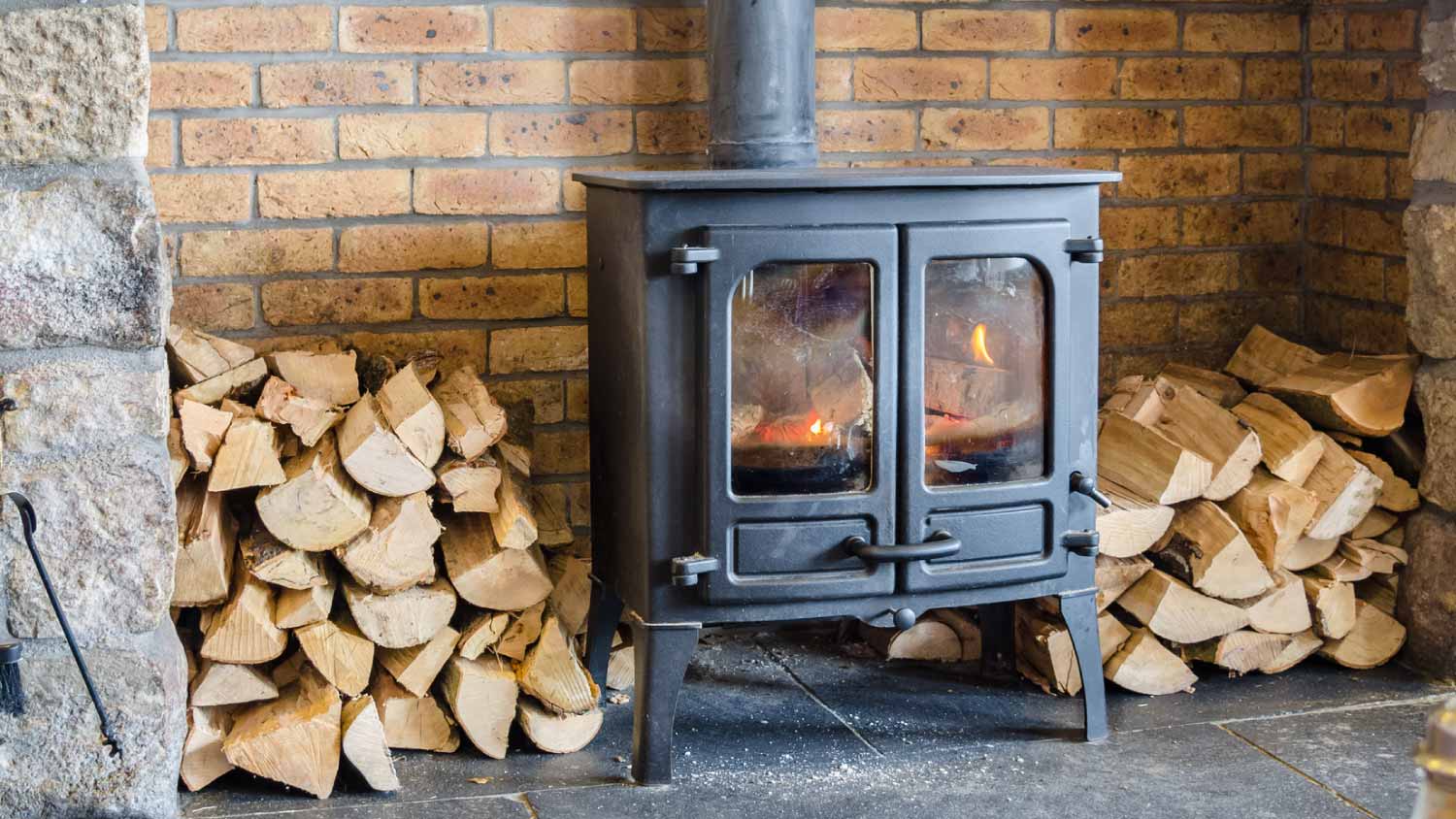What’s the Difference Between Induction and Electric Cooktops?
The competition is heating up


Induction cooktops use electromagnetic fields to heat food
Electric cooktops use electricity to get hot
Induction cooktops require compatible cookware
Electric ranges cost between $360 and $1,800; induction units cost $3,000+
If you’re looking to move away from gas cooking and avoid the associated safety hazards, you might consider electric and induction cooktops. Both options offer excellent cooking performance, but understanding their key differences is crucial for making the best choice for your kitchen.
Electric vs Induction Cooktops: Key Differences
The key difference between electric and induction cooktops is how they generate heat. Electric cooktops produce radiant heat by sending electricity between heating elements and then to cookware. Induction cooktops, however, use copper coils to generate an electromagnetic field and create heat in a similar way to that of a microwave.
Induction cooktops only heat the cookware (via electromagnetism), while electric cooktops heat the surface of the cooktop, which then transfers heat to the cookware. Essentially, induction cooktops turn pots and pans into their own heat source, allowing food to cook faster as the heat doesn’t need to be transferred from the cooking surface in addition to the cookware.
Both cooktops are alternatives to gas ranges; many homeowners wish to convert their gas stoves, given the risk of carbon monoxide poisoning.
What Is An Induction Cooktop?

Induction cooktops look like glass-top electric models, but they use electromagnetic currents to create a heat source. A current flows through copper coils under the cooktop’s glass surface and creates a magnetic field; when a compatible pot or pan is then placed on the cooktop, the magnetic field sends electrical currents to the pan, turning the cookware into a heater.
Through this unique process, induction cooktops can help you cook things quickly and at optimal cooking temperatures because the heat doesn’t need to travel through a cooking surface.
You’ll typically need a 220- or 240-volt outlet to plug in an induction range.
| Pros | Cons |
|---|---|
| Cooks food fast | Requires specialty cookware |
| Environmentally-friendly | Emits a sound when in use |
| Surface cools quickly for easy cleanup | Replacing a gas stove can be expensive |
| Excellent for finicky dishes | More expensive than electric cooktops |
| A safer choice, if kids are around |
Best for:
Homeowners who frequently make dishes that require extreme temperature control
Homes with children (or klutzy home chefs)
Homeowners who require easy clean-up
Pros of Induction Cooktops
Many homeowners choose induction cooktops because of how quickly they can heat up food, with temperature accuracy. They essentially cut out the middle person—you don’t need to wait for the element to heat up and then for the heat to transfer to the pot—your tea kettle will be whistling before you know it. Induction cooktops not only heat up quickly, but it cools down quickly, too, making induction cooktops easy to clean right after cooking and prevents kids or busy home chefs from accidentally getting hurt on a hot stove.
Their built-in safety features also help prevent injury. If you turn on an induction burner by mistake, it won’t get hot—that’s because the heat is produced from within the cookware itself. As soon as the cookware is removed from the burner, the heating stops.
Induction cooktops are also known to be environmentally-friendly, requiring 5 to 10 percent less energy than conventional electric stoves. In addition, induction stoves are better for air quality than gas stoves.
Cons of Induction Cooktops
The reality is that some home chefs miss the flame of a gas stove too much to switch to electric. Cooking with an induction cooktop feels very different from other types of cooktops; many units don’t even create a red glow when on, though some models now have virtual flames and other lighting signals.
Overall, induction stovetops are more expensive than gas or electric. For a new unit with multiple induction burners, you might spend up to $3,000. In addition, you can only use specific cookware that is compatible with these cooktops, so if you don’t already have induction-ready pots and pans, you’ll need to invest in those as well.
Finally, some homeowners might not like the buzz or hum that accompanies many induction stovetops.
What Is an Electric Cooktop?

Electric cooktops have an electrical current that flows through a metal coil beneath a glass or ceramic surface top. When the cooktop is turned on, the coil gets hot and begins to glow; it then passes its heat through the glass using infrared energy. The burner holding the pot or pan warms up and then passes the heat to your food, cooking it.
Electric cooktops are also known as radiant cooktops, and take longer to heat up and cool down than induction or gas stoves. For safety, some radiant cooktops have indicator lights that let you know when the burner is still warm.
You’ll typically need a 220- or 240-volt outlet to plug in an electric stove.
| Pros | Cons |
|---|---|
| Safer than gas | More expensive than gas |
| Less expensive option | Stove will be out of use during any power outages |
| Works with any cookware | |
Best for:
Homeowners on a budget
Homeowners who don’t want to risk a gas leak
Homeowners who don’t want to swap out their cookware
Pros of Electric Cooktops
Electric cooktops are safer than gas, as you don’t need to run a gas line to them. Gas lines present a heightened risk of danger, with the ever-present chance that a gas leak could occur.
Homeowners on a budget will find that, compared to induction cooktops, electric cooktops are much less expensive. Generally, you can expect to spend between $360 and $1,800 on a unit.
Like induction cooktops, electric units have a smooth glass surface that is easy to clean, and they don’t require any special cookware to use, minimizing the upfront costs.
Cons of Electric Cooktops
Electric cooktops heat up and cool down much slower than induction or gas ranges, so you can expect to spend more time at the stove. In addition, home chefs will find they have less control over their food; the pan will stay hot for longer after you turn the heat down and continue cooking your food—the burners retain heat very well, so some cooks find they need to remove the pan off the burner quickly to prevent burning and overcooking.
In addition, electric cooktops are not as safe as induction models. The range will get hot whether or not cookware is present. Because it takes longer to cool down, the range will stay hot for a while after cooking is complete, which could be a hazard if children are in the home.
While electric stovetops don’t present any of the risks of having a gas line if the power goes out—so does your range.
Induction vs. Electric Cooktops
By looking at specific features side-by-side, you can decide whether an induction or electric stovetop is right for your home. It all comes down to your priorities and the type of cooking you want to do in your kitchen—someone who works with delicate dishes that require temperature nuance might need an induction cooktop.
Price: Electric
Induction is the pricier option available, with electric costing less than even gas stovetops. Expect to spend between $360 and $1,800 for an electric range. Gas stovetops cost between $400 and $2,200, with induction running $3,000 or more.
Style: Tie
While some homeowners prefer the sleek, flat look of an induction stovetop, electric cooktops are not visually intrusive; they feature slightly raised coils. The decision will depend on your kitchen’s overall style and personal preferences.
Durability: Induction
Induction cooktops tend to be more durable than electric ones due to their lack of physical heating and the strong glass surface on top that prevents damage from spills. That said, they can scratch easily, so it’s important not to slide cookware around on them.
Cooking Control: Induction
Induction allows you to exert a high level of control over how hot your pans and pans get—and allows you to turn the heat off quickly, reducing the chance that you will overcook and burn food.
Maintenance: Induction
Electric cooktops have more elements to clean and care for than induction, which has a smooth flat surface that’s easy to wipe down after use. In addition, because induction cooktops cool down so fast, you can clean up right after cooking without fear of getting burnt.
ROI and/or Resale Value: Induction
Induction cooktops are increasingly in demand, given their safety features and sleek, modern look.
Frequently Asked Questions
Because induction ranges rely on electromagnetic fields to generate heat, they only work with cookware made from ferrous metals—metals that contain iron. Cast iron and most stainless steel pans work on induction cooktops, but copper and aluminum usually do not, though there are some specially-made models that are compatible.
Usually, surfaces that heat up or begin to glow when in use are traditional electric cooktops. Induction ranges only warm slightly, and often do not have an indicator that they are turned on (though some newer models have lights to mimic the glow of electric units). Because induction stovetops don’t get very hot, they are considered safer than electric units.
Some portable cooktops are compatible with standard 120-volt outlets, but most induction (and electric) ranges and stoves need a dedicated 220- or 240-volt circuit and 40 to 50 amps to work. If you are replacing an old electric range with an induction one, you likely already have the proper outlet, but it’s worth checking with a local appliance installation company.



.jpg?impolicy=leadImage)

- Appliance Repair Companies
- Washing Machine Repair
- Dryer Repair
- Refrigerator Repair
- Dishwasher Repair
- Oven Repair
- Wood & Pellet Stove Repair
- Freezer Repair Services
- Wood Stove Services
- Gas Stove Repair
- Emergency Appliance Repair Companies
- Ice Maker Repair
- Gas Appliance Repair
- GE Appliance Repair
- GE Refrigerator Repair
- GE Dryer Repair
- GE Dishwasher Repair
- GE Washing Machine Repair
- Samsung Appliance Repair
- Samsung Refrigerator Repair
- Samsung Dryer Repair
- Samsung Washer Repair
- Samsung Dishwasher Repair
- Samsung Oven Repair
- Whirlpool Repair
- Whirlpool Refrigerator Repair
- Whirlpool Washer Repair
- Whirlpool Dryer Repair
- Whirlpool Oven Repair
- Maytag Appliance Repair
- Maytag Refrigerator Repair
- Maytag Washer Repair
- Maytag Dryer Repair
- Maytag Dishwasher Repair
- Kitchenaid Appliance Repair
- Kitchenaid Oven Repair
- Kitchenaid Refrigerator Repair
- Kenmore Appliance Repair
- Kenmore Dishwasher Repair
- Kenmore Washer Repair
- Kenmore Dryer Repair
- LG Refrigerator Repair
- Bosch Appliance Repair
- Kenmore Refrigerator Repair
- LG Appliance Repair Services
- GE Microwave Repair
- Electrolux Appliance Repair
- Electrolux Washer Repair
- Kitchenaid Dishwasher Repair Services
- Wood Stove Inspection
- Dishwasher Installation
- Trash Compactor Repair
- Induction vs. Gas vs. Electric Stovetops: Which Is Better?
- 7 Types of Stove Burners and Cooktops for Whipping Up Tasty Homemade Meals
- What Are the Parts of a Stove?
- Gas vs. Electric Ovens: Pros, Cons, Cost, and More
- How to Decide: Repair or Replace Cooktop
- Gas vs. Electric Water Heaters: Which Is Better for Your Home?
- Gas vs. Electric Dryers: Pros, Cons, and Costs
- Do Heat Pumps Heat and Cool?
- How Long Do Gas Stoves Last?
- Is a Heat Pump Worth It? Pros, Cons, and Alternatives










